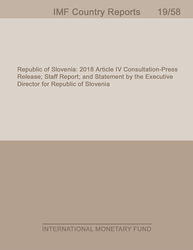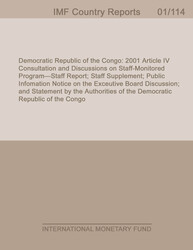
Libya: Selected Issues
Libya: Selected Issues
READ MORE...
Volume/Issue:
Volume 2024
Issue 207
Publication date: July 2024
ISBN: 9798400282195
$20.00
Add to Cart by clicking price of the language and format you'd like to purchase
Available Languages and Formats
| Arabic | |||
| English |
Prices in red indicate formats that are not yet available but are forthcoming.
Topics covered in this book
This title contains information about the following subjects.
Click on a subject if you would like to see other titles with the same subjects.
Banks and Banking , Finance , Investments and Securities-General , Business and Financial , exchange market pressure , EMP index , copyright page , weakening exchange rate , market rate , Currency markets , Exchange rates , International reserves , Depreciation , Eastern Europe , Global
Also of interest
Summary
This Selected Issues paper identifies the sources and quantifies the exchange market pressures on the Libyan dinar. The paper highlights that: (1) the cumulative pressure on the exchange rate has been negative; and (2) despite the alternating appreciation and depreciation pressures, foreign exchange reserves have remained relatively stable. The authorities’ toolkit is limited: they strive to maintain the stock of reserves at a high level and to keep the exchange rate peg intact, all without the use of fiscal policy or of conventional monetary policy instruments. Therefore, developing conventional monetary policy tools and making sure that fiscal policy is consistent with the overall macroeconomic objectives would help the authorities achieve their goals without resorting to capital flow measures. While Libya had periods of both depreciation and appreciation pressures, overall, it faced substantial depreciation pressure. In other words, Libya’s policies over the medium term were not in line with the three-pronged macroeconomic objective of maintaining high foreign reserves, a pegged official exchange rate, and a narrow gap between the parallel and the official exchange rates. The findings suggest that additional monetary tools and the use of fiscal policy can help contain the parallel market premium and avoid the use of capital flow measures.
Copyright © 2010 - 2025
Powered by:
AIDC



